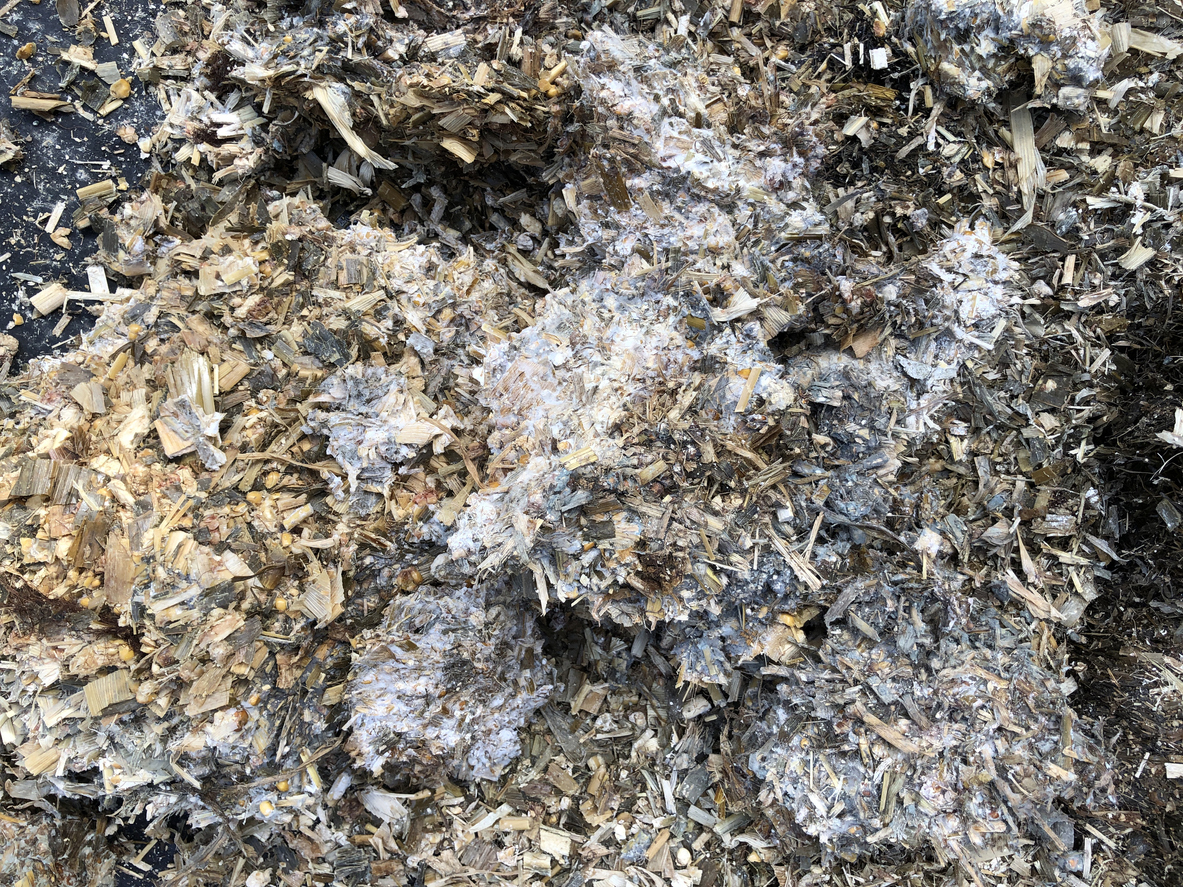Beneficial Soil Fungus
There are several “keystone” or critical soil organisms that are important to human’s survival. Arbuscular mycorrhizal (AM) fungi are a type of fungi that infect plant roots root to recycle soil nutrients that increase crop growth, vigor, and yield. About 250 AM fungi species infect 80-90% of all agricultural annual crops. This beneficial (symbiotic) association started over 450 million years ago, when newly evolving plants had few roots and relied on AM fungi to gather soil nutrients like phosphorus (P), sulfur, nitrogen, and many micronutrients. AM fungi form a mycorrhizal network with plant roots, extending out 6-18 inches from a root hair, increasing surface area for soil nutrient extraction by 20X. AM fungi hyphae are 1/10 the size of a root hair, so tiny AM hyphae extract soil nutrients unavailable to plant roots. "There are 1 to 20 meters of AM hyphae in each gram (finger nail size) of soil or maybe 5 miles of AM fungi hyphae in a pound of soil" (Sylvia et al 2005). These keystone organisms are critical to human food production and crop growth.
How important are the AM fungi to plants? As much as 25% of total carbohydrates root reserves (plant sugars) are used to feed soil microbes. AM fungi perform many soil functions including nutrient recycling; carbon or soil organic matter (SOM) buildup and breakdown; water conservation; increased soil tilth; and they also produce plant hormones, antibodies, and vitamins that promote plant growth and disease suppression (Ingham, 2009). Mycorrhizal fungi increase the efficiency of plant root nutrient extraction leading to increased growth and production by making infertile soils more fertile (Sylvia et al., 2005).
The AM fungi infect the roots and in exchange for plant sugars, supply the plant with water and nutrients. AM fungi can increase plant water absorption by 140% to 250%, reducing drought stress. During a drought, fungi grow when the bacteria do not. Fungi supply moisture to the plant roots by crossing cracking dry soils to obtain water not available to plant hair roots. AM fungi also supply nitrogen (N) to plants in dry soil, accumulating soil N to break down hard to decompose crop residues (Ingham, 2009).
AM fungi bring back 6X more phosphorus (P) than the plant can alone. AM fungi enhance soybean (legume) production by increasing P absorption, nodulation and N fixation. AM fungi enhance and cultivate good bacteria, especially Rhizobia bacteria for N fixation, which help legume plants grow (Brady and Weil, 2009) by making P more plant available to soybeans. AM fungi also produce a sticky substance call glomalin which enhances soil tilth, creating soil that crumbles. Glomalin is composed of sugars from the plant root and protein from the AM fungi forming a glycoprotein. In a good soil, glomalin may represent 1–5% of the total carbon in the soil and glomalin is 30% carbon, 1–2% nitrogen, and up to 5% iron, which gives it a reddish soil color (Lavelle and Spain, 2005).
In no-till agriculture, fungal populations dominate the soil food web (although they are less in number than the bacteria) and improve carbon buildup. AM fungi have a greater carbon use efficiency (40-55%) than bacteria (20-30%), so AM fungi build SOM. Bacteria species dominate in tilled soils and are less efficient at retaining carbon or SOM. AM fungi have higher carbon content (10:1 C:N ratio) and less nitrogen (N=10%) in their cells than bacteria.
There are several factors that decrease AM fungi in the soil. When excess nutrients like N and P are supplied by commercial fertilizer to plant roots, the AM fungi stop working. Tillage also decreases the effectiveness of the AM fungi by destroying the mycorrhizal network associated with plant roots. Mycorrhizal fungi may be harmed by many fungicides. So excess commercial fertilizer, tillage, soil compaction, pesticides (fungicides and fumigants like Benlate), short crop rotations, and long fallow periods tend to decrease fungal populations. Cereal crops and grass crops had three times higher density and length of fungi hyphae than land that was fallow or tilled (Lavelle and Spain, 2005). Practices like cover crops and long-term no-till greatly enhance AM fungi populations and help AM fungi remain a “keystone” soil organism important for human food production.
